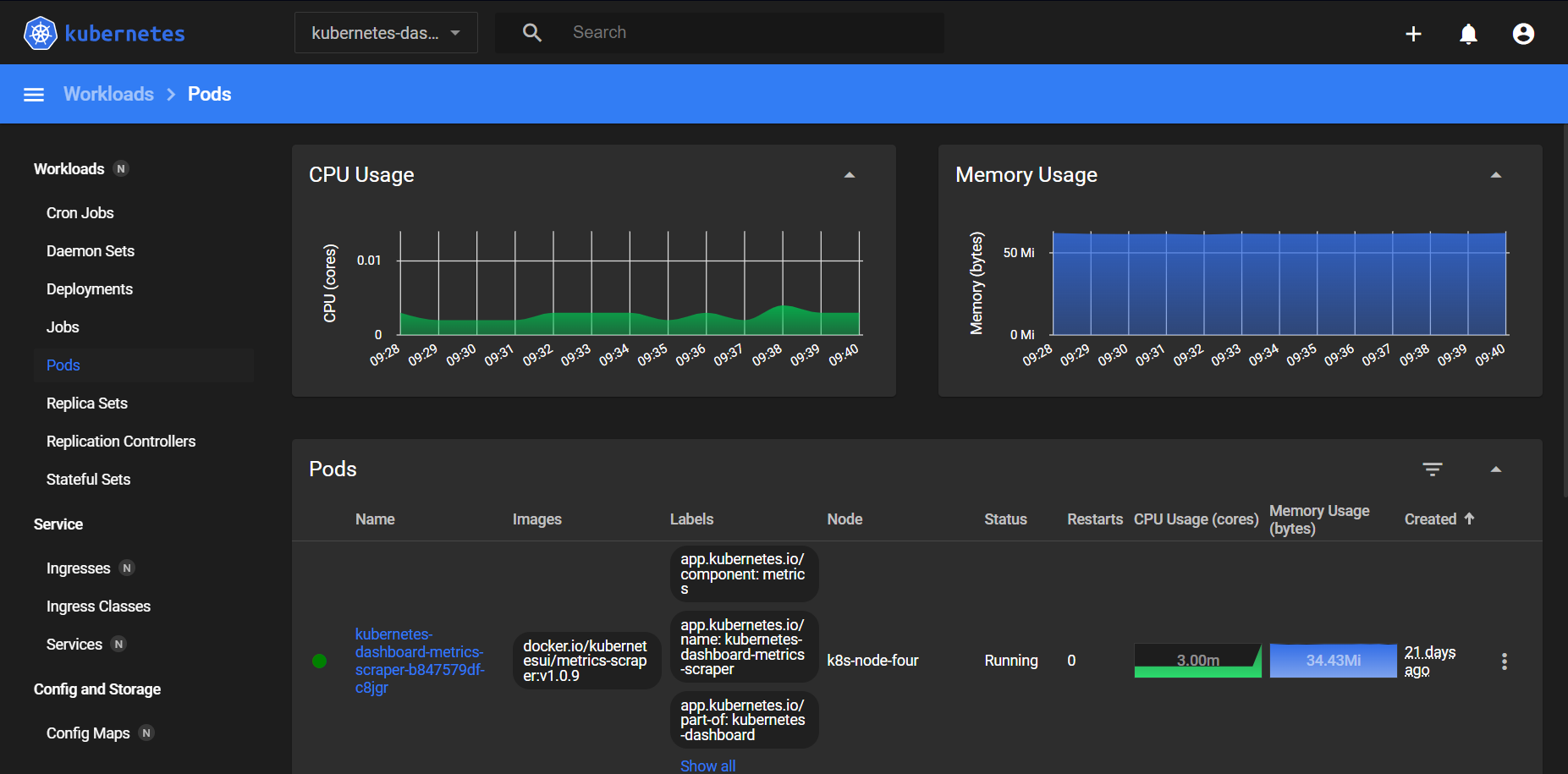Operators are software extensions to Kubernetes that make use of custom resources to manage applications and their components. Operators follow Kubernetes principles, notably the control loop.
Operator gives simplification to deploy common application such as database servers. In this example, there are MySQL Operator and MongoDB Community Operator. For shared storage, a NFS is used which is provisioned by NFS Subdir External Provisioner.
A configuration directory layout used in this page is shown as follows:
> kubernetes
> config <- configurations
> mongodb-operator <- MongoDB operator repository
> mysql-operator <- MySQL operator repository
> nfs-provisioner
> nfs-subdir-external-provisioner <- NFS subdir external provisioner repository
> provisioner-one <- provisioner one
> provisioner-two <- provisioner two
> provisioner-three <- provisioner three
> patches <- patchesNFS Provisioner
NFS provisioner is provided by NFS Subdir External Provisioner which allows us to use NFS server for persistent volume. NFS Subdir External Provisioner provides a boiler plate for a single NFS server, but in this setup there will be three NFS servers.
-
Clone NFS Subdir External Provisioner repository
mkdir -p nfs-provisioner git clone https://github.com/kubernetes-sigs/nfs-subdir-external-provisioner.git nfs-provisioner/nfs-subdir-external-provisioner -
Review provisioner configuration for
provisioner-one,provisioner-two, andprovisioner-threevi nfs-provisioner/provisioner-one/kustomization.yamlresources: - deploy/class.yaml - deploy/deployment.yaml patchesStrategicMerge: - patches.yaml patches: - target: kind: StorageClass name: nfs-client patch: |- - op: replace path: /metadata/name value: nfs-data-1 - op: replace path: /provisioner value: k8s-sigs.io/nfs-subdir-external-provisioner-one - target: kind: Deployment name: nfs-client-provisioner patch: |- - op: replace path: /metadata/name value: nfs-client-provisioner-one - op: replace path: /metadata/labels/app value: nfs-client-provisioner-one - op: replace path: /spec/selector/matchLabels/app value: nfs-client-provisioner-one - op: replace path: /spec/template/metadata/labels/app value: nfs-client-provisioner-onevi nfs-provisioner/provisioner-one/patches.yamlapiVersion: apps/v1 kind: Deployment metadata: labels: app: nfs-client-provisioner name: nfs-client-provisioner spec: template: spec: containers: - name: nfs-client-provisioner env: - name: PROVISIONER_NAME value: k8s-sigs.io/nfs-subdir-external-provisioner-one - name: NFS_SERVER value: 10.0.0.2 - name: NFS_PATH value: /mnt/data volumes: - name: nfs-client-root nfs: server: 10.0.0.2 path: /mnt/data -
Ensure NFS Subdir External Provisioner deployment configuration is copied accross all NFS server instances
cat nfs-provisioner/copy-deployment.sh#!/bin/bash DIR=pwdPROVISIONERS="provisioner-one provisioner-two provisioner-three" for PROVISIONER in $PROVISIONERS; do if [ -d "$PROVISIONER" ]; then rsync -av nfs-subdir-external-provisioner/deploy $PROVISIONER fi done./nfs-provisioner/copy-deployment.sh -
Apply kustomization for our NFS provisioner
kubectl apply -k nfs-provisioner -
After the kustomization applied, there will be three storage classes
nfs-data-1which belong to first NFS server (10.0.0.2)nfs-data-2which belong to second NFS server (10.0.0.3)nfs-data-3which belong to third NFS server (10.0.0.4)
MySQL Operator for Kubernetes
MySQL Operator for Kubernetes deployment is detailed from the official site. The operator will be deployed in the mysql-operator namespace.
-
Clone MySQL Operator repository
git clone https://github.com/mysql/mysql-operator.git -
Apply CRD
kubectl apply -f mysql-operator/deploy/deploy-crds.yamlcustomresourcedefinition.apiextensions.k8s.io/innodbclusters.mysql.oracle.com created customresourcedefinition.apiextensions.k8s.io/mysqlbackups.mysql.oracle.com created customresourcedefinition.apiextensions.k8s.io/clusterkopfpeerings.zalando.org created customresourcedefinition.apiextensions.k8s.io/kopfpeerings.zalando.org created -
Deploy operator
kubectl apply -f mysql-operator/deploy/deploy-operator.yamlserviceaccount/mysql-sidecar-sa created clusterrole.rbac.authorization.k8s.io/mysql-operator created clusterrole.rbac.authorization.k8s.io/mysql-sidecar created clusterrolebinding.rbac.authorization.k8s.io/mysql-operator-rolebinding created clusterkopfpeering.zalando.org/mysql-operator created namespace/mysql-operator created serviceaccount/mysql-operator-sa created deployment.apps/mysql-operator created -
Ensure the operator is running
kubectl get pod -n mysql-operator -o wideNAME READY STATUS RESTARTS AGE IP NODE NOMINATED NODE READINESS GATES mysql-operator-b6dd879db-kzphw 1/1 Running 0 49s 10.244.8.194 k8s-node-four
MongoDB Community Kubernetes Operator
MongoDB Community Kubernetes Operator deployment is detailed from the official site. The following deployment will assume to use mongodb-operator namespace. See here for more information.
-
Clone MongoDB Community Kubernetes Operator repository
git clone https://github.com/mongodb/mongodb-kubernetes-operator.git mongodb-operator -
Apply patch to allow the operator to watch all namespaces and change the namespace accordingly
vi patches/mongodb-kubernetes-operator.patchdiff --git a/config/manager/manager.yaml b/config/manager/manager.yaml index e488e07..a9e7921 100644 --- a/config/manager/manager.yaml +++ b/config/manager/manager.yaml @@ -35,9 +35,7 @@ spec: - /usr/local/bin/entrypoint env: - name: WATCH_NAMESPACE - valueFrom: - fieldRef: - fieldPath: metadata.namespace + value: "*" - name: POD_NAME valueFrom: fieldRef: diff --git a/deploy/clusterwide/cluster_role_binding.yaml b/deploy/clusterwide/cluster_role_binding.yaml index 7617ec0..3f426e2 100644 --- a/deploy/clusterwide/cluster_role_binding.yaml +++ b/deploy/clusterwide/cluster_role_binding.yaml @@ -4,7 +4,7 @@ metadata: name: mongodb-kubernetes-operator subjects: - kind: ServiceAccount - # namespace:+ namespace: mongodb-operator name: mongodb-kubernetes-operator roleRef: kind: ClusterRole cd mongodb-operator && git apply ../patches/mongodb-kubernetes-operator.patch -
Create namespace
kubectl create namespace mongodb-operatornamespace/mongodb-operator created -
Install CRD
kubectl apply -f mongodb-operator/config/crd/bases/mongodbcommunity.mongodb.com_mongodbcommunity.yamlcustomresourcedefinition.apiextensions.k8s.io/mongodbcommunity.mongodbcommunity.mongodb.com created -
Deploy cluster role and binding
kubectl apply -f mongodb-operator/deploy/clusterwide/clusterrole.rbac.authorization.k8s.io/mongodb-kubernetes-operator created clusterrolebinding.rbac.authorization.k8s.io/mongodb-kubernetes-operator created clusterrole.rbac.authorization.k8s.io/read-access-for-service-binding created -
Install RBAC
kubectl apply -k mongodb-operator/config/rbac/ -n mongodb-operatorserviceaccount/mongodb-database created serviceaccount/mongodb-kubernetes-operator created role.rbac.authorization.k8s.io/mongodb-database created role.rbac.authorization.k8s.io/mongodb-kubernetes-operator created rolebinding.rbac.authorization.k8s.io/mongodb-database created rolebinding.rbac.authorization.k8s.io/mongodb-kubernetes-operator created -
Install operator
kubectl apply -f mongodb-operator/config/manager/manager.yaml -n mongodb-operatordeployment.apps/mongodb-kubernetes-operator created -
Ensure the operator is running
kubectl get pod -n mongodb-operator -o wideNAME READY STATUS RESTARTS AGE IP NODE NOMINATED NODE READINESS GATES mongodb-kubernetes-operator-7f4b4598dd-bkhbs 1/1 Running 0 70s 10.244.49.1 k8s-node-one
